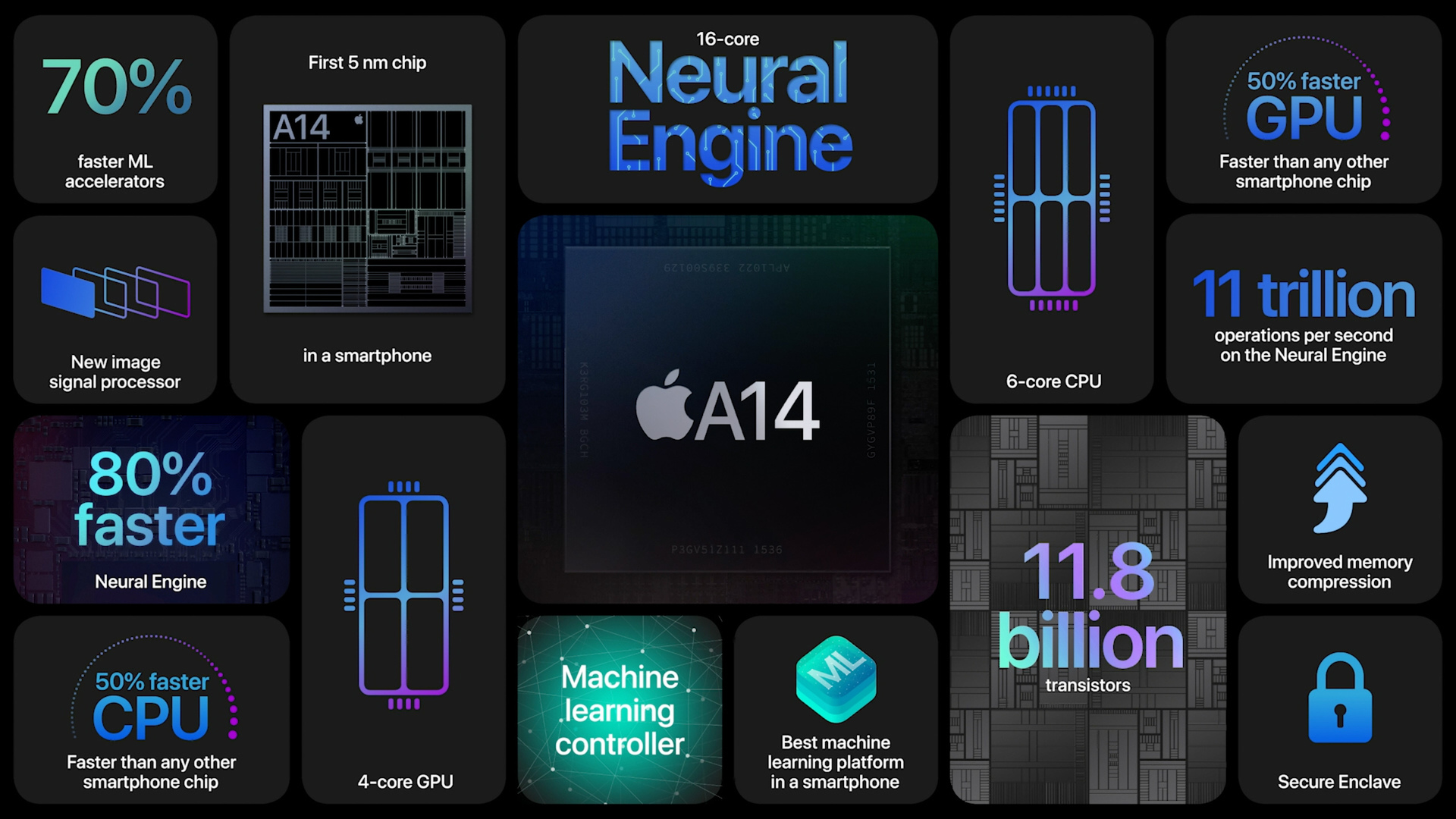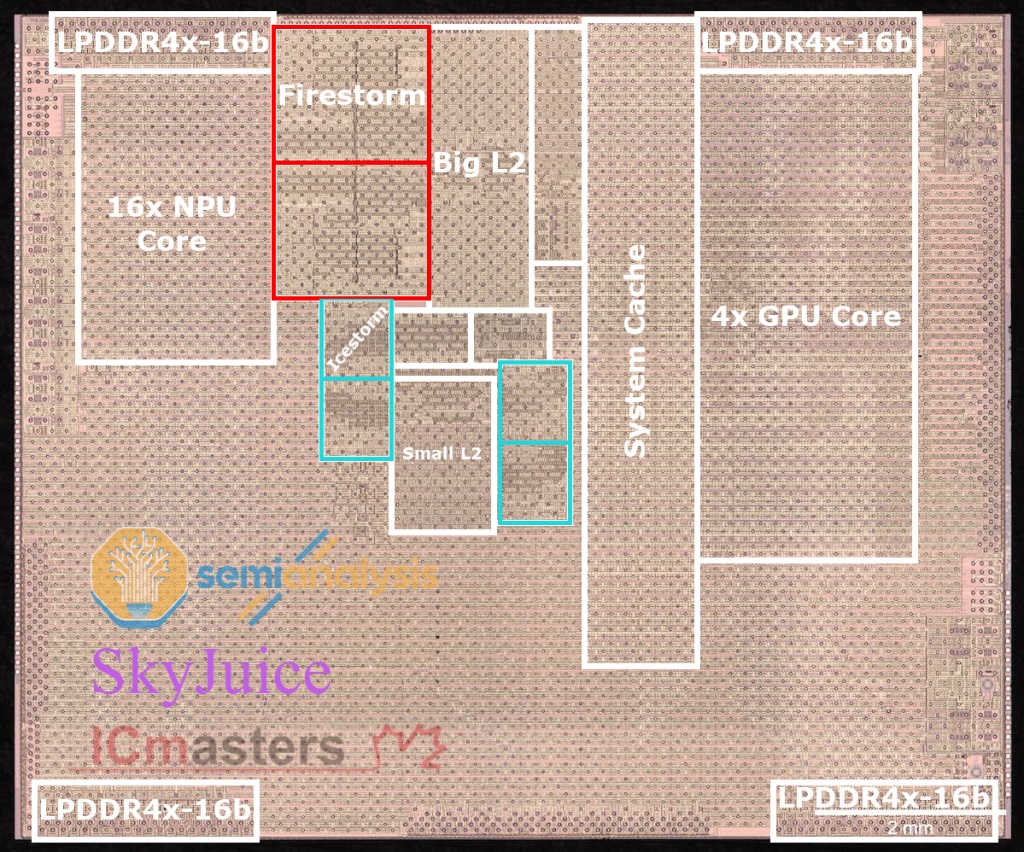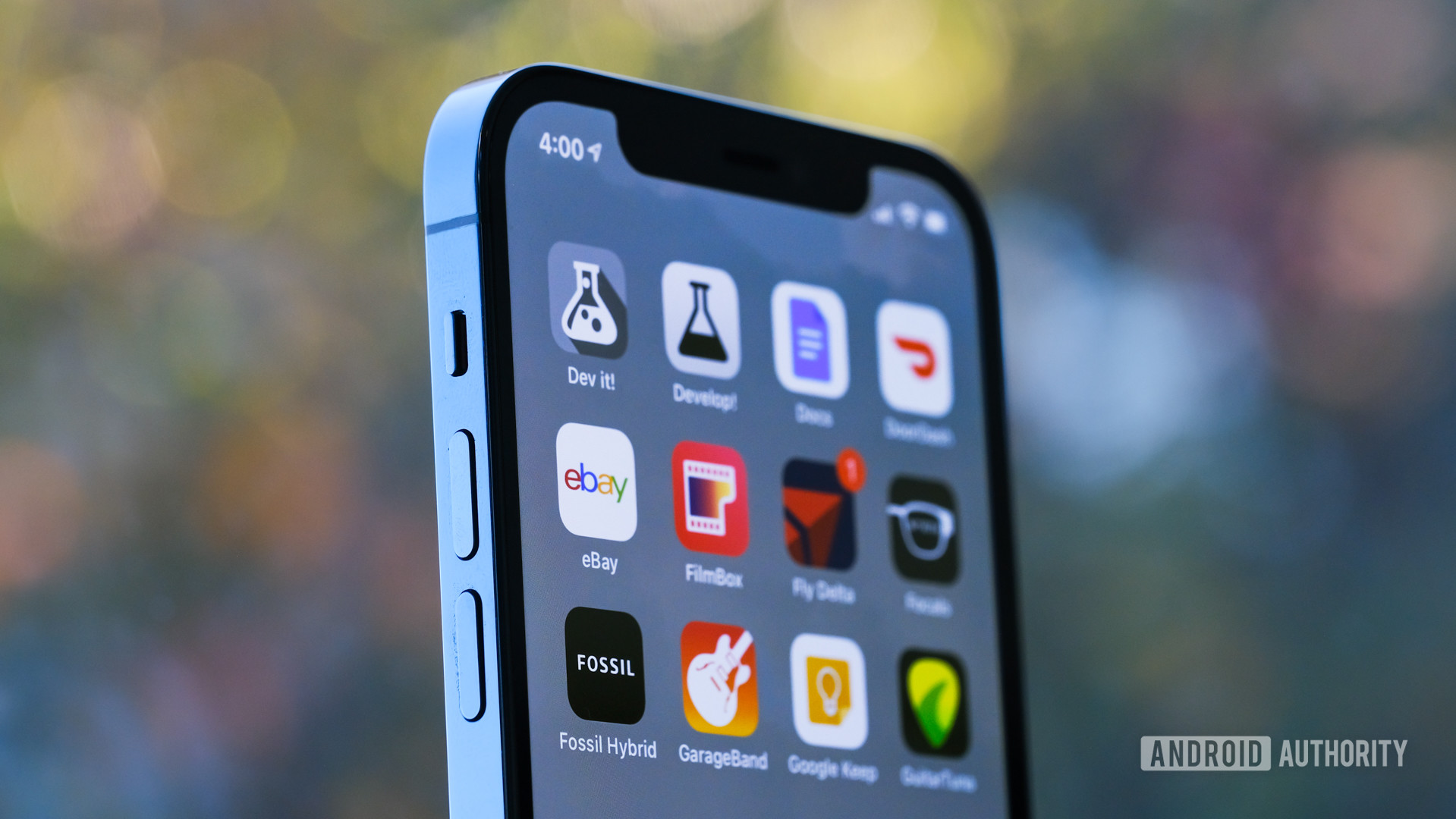Affiliate links on Android Authority may earn us a commission. Learn more.
Apple A14 Bionic test: Is iPhone silicon still more powerful than Android SoCs?
Apple has a reputation as a top-tier chipset designer, offering blazing fast performance that has often put its Android competitors to shame. The Apple A14 Bionic is the company’s latest chip, powering the entire iPhone 12 range. It was the first chipset announced to be built on TSMC’s cutting edge 5nm process, bringing with it performance and power efficiency improvements beyond 2020’s larger 7nm designs.
During the iPhone launch presentation, Apple spent more time comparing the A14 Bionic to the much older A12 rather than the more modern A13. That hints at smaller performance gains this generation. With Android phones benefiting from an enhanced Qualcomm Snapdragon 865 Plus model and the Snapdragon 875 right around the corner, the performance gap could be closer than ever.
We have the iPhone 12 Pro in-house. So we thought we’d run a few benchmarks on the chip to see how it performed. We’ll also dive deeper into what’s new with Apple’s chipset.
Read more: What is an SoC? Everything you need to know about smartphone chipsets
A closer look at the Apple A14 Bionic

The biggest news with the Apple A14 Bionic is the move down to the industry’s smallest 5nm manufacturing node. Although interestingly, analysis from SemiAnalysis suggests that the move to 5nm has only achieved a 1.49x shrink in die size rather than TSMC’s claims of a 1.8x shrink for 5nm. It’s becoming increasingly difficult to shrink down a chip’s inner workings, particularly when it comes to memory. Regardless, that’s not the only thing new about Apple’s latest chip.
Apple sticks with a hexa-core 2+4 big.LITTLE CPU architecture design, but switches over to new “Firestorm” and “Icestorm” cores. Apple is targeting laptop class CPU performance with its new chip, which may end up as the basis for Arm-powered Macbooks coming later this year. Apple’s custom-CPU design efforts over the years are really beginning to pull away from off-the-shelf parts we’ve seen from Arm. The big question is how well these more powerful cores can sustain their peak performance in a smartphone form factor. Oddly, Apple didn’t comment on efficiency during the launch.
Apple has spent more on silicon outside of traditional CPU and GPU upgrades.
On the GPU side, Apple also sticks with a 4-core GPU cluster, which is built entirely in-house. This layout looks the same as the A13, with any performance improvement likely to come from clock increases rather than major architecture or core count improvements.
The rest of the 11.8 billion transistors, a 38% increase over the A13’s 8.5 billion, can be found in improvements to the 16-core neural engine for AI workloads and image processing. Apple boasts 11TOPs of AI inferencing performance, up from 6TOPs in the A13. On paper, that’s still behind the Snapdragon 865’s 15TOPs of AI performance. However, these figures are reasonably meaningless. TOPs don’t tell us what each operation does nor how much power they consume to execute.

The iPhone 12 Pro is also Apple’s first 5G smartphone. Just like the Snapdragon 865, the A14 Bionic doesn’t feature an integrated 5G modem. Instead, Apple has turned to Qualcomm and paired the chip up with a Snapdragon X55 4G and 5G dual-mode modem. This includes mmWave and sub-6GHz support, 5G FDD, 4G/5G spectrum shoreline, and support for futureproof standalone 5G networks. The modem’s speeds cap out at 7Gbps on mmWave networks. Nevertheless, consumers will see much lower speeds than that. Interestingly, a teardown by iFixit notes that Apple has opted for a slimmer Chinese manufactured USI mmWave antenna rather than Qualcomm’s QTM525 found in Android smartphones.
A14 Bionic specs vs Android SoCs
| Apple A14 Bionic | Qualcomm Snapdragon 865 | HiSilicon Kirin 9000 | Samsung Exynos 990 | |
|---|---|---|---|---|
CPU Config | Apple A14 Bionic 2x Firestorm (Big cores) 4x Icestorm (Little cores) (Fully-custom CPU designs) | Qualcomm Snapdragon 865 1x Cortex A77 @ 3.1GHz 3x Cortex-A77 @ 2.4GHz 4x Cortex-A55 @ 1.8GHz (Semi-custom CPU designs) | HiSilicon Kirin 9000 1x Cortex-A77 @ 3.13GHz 3x Cortex-A77 @ 2.54GHz 4x Cortex-A55 @ 2.05GHz | Samsung Exynos 990 2x Mongoose 5th gen 2x Cortex-A76 4x Cortex-A55 |
GPU | Apple A14 Bionic 4 core (Apple in-house design) | Qualcomm Snapdragon 865 Adreno 650 (+10% boost over Snapdragon 865) | HiSilicon Kirin 9000 Mali-G78, 24 cores | Samsung Exynos 990 Mali-G77, 11 cores |
AI / DSP | Apple A14 Bionic 16-core Neural Engine | Qualcomm Snapdragon 865 Hexagon 698 DSP + Tensor Accelerator | HiSilicon Kirin 9000 2x big core 1x tiny core | Samsung Exynos 990 Dual-core NPU + DSP |
RAM | Apple A14 Bionic LPDDR4X | Qualcomm Snapdragon 865 LPDDR5 | HiSilicon Kirin 9000 LPDDR5 / LPDDR4X | Samsung Exynos 990 LPDDR5 |
Modem | Apple A14 Bionic 4G LTE 5G sub-6Ghz & mmWave (external) | Qualcomm Snapdragon 865 4G LTE 5G sub-6Ghz & mmWave (external) | HiSilicon Kirin 9000 4G LTE 5G sub-6Ghz & mmWave (integrated) | Samsung Exynos 990 4G LTE 5G sub-6Ghz & mmWave (external) |
Process | Apple A14 Bionic 5nm | Qualcomm Snapdragon 865 7nm EUV | HiSilicon Kirin 9000 5nm | Samsung Exynos 990 7nm EUV |
iPhone 12 Pro benchmark results
Let’s start by comparing the new Apple iPhone 12 Pro to the previous generation iPhone 11 Pro and its A13 processor.
For starters, there’s a noticeable jump in CPU performance thanks to the new cores. Single thread performance jumps 21% in the popular GeekBench 5 benchmark. Likewise, multi-core performance improved by a decent 17%. This is down to the change from “Lightning” and “Thunder” CPUs to the new “Firestorm” and “Icestorm” big and little microarchitecture. Plus any additional clock-speed boosts made available by the smaller 5nm process.
Overall system performance, via AnTuTu, sees a decent jump too. This is due to a combination of the faster CPU and GPU. However, the bulk of the uplift seems to come from improvements to the memory system, such as Apple’s new compression technology and big cache system in the chip. There definitely looks to have been a noticeable improvement here — up to a 30% boost over the previous-gen in total.
The GPU result is more disappointing. We didn’t clock any performance improvement between the two phones with 3DMark. Although this could be down to the benchmark’s particular tests and the few extra display pixels the GPU has to drive in the iPhone 12 Pro. AnTuTu shows a bigger boost for GPU performance over the last-gen chipset, but it’s not huge. Even Apple’s own estimates put the improvement below 8% from the A13. It’s definitely a case of minimal uplift for graphics performance this time around.
Of course, there’s more to smartphone SoCs than just CPU and GPU performance these days. Apple has invested a healthy chunk of silicon into its AI and image processing components too. Yet, the improvements here are much harder to test with benchmarks.
What about versus Android?
There’s a common pitfall when comparing Apple and Android benchmarks — they’re not a fair comparison. Many benchmarks, particularly those that stress the GPU, run using different graphics APIs. Such as Apple’s Metal versus OpenGL and Vulkan used by Android phones. As such, the scores work out a little differently, making a direct comparison rather difficult.
What we can do is compare CPU performance from GeekBench 5. For others, we’ll have to look at the performance difference between the iPhone 11 Pro and 12 Pro and compare that to an earlier comparison we did between the older Apple handset and Qualcomm’s Snapdragon 865 to get us in the right ballpark. So let’s go through the math.
For starters, GeekBench 5 and our own previous tests give a decent single-core CPU lead to the Apple A13 and by extension the newer A14. However, with more big cores, we previously found that the Snapdragon 865 went toe to toe and even beat the Apple A13 in multi-core scenarios. The lead was only 8%, so the new A14 Bionic overtakes with its big CPU uplift. Nevertheless, the gap is still quite tight and could easily close again next year.
Apple regains a healthy CPU lead with the A14 Bionic.
Again, we can’t compare GPU tests directly because of the different display resolutions and APIs across devices. However, the iPhone 12 Pro appears to boost major overall system performance by a very healthy margin. It will therefore extend its lead over current-gen Android SoCs in this regard too. However, the ASUS ROG Phone 3 and its Snapdragon 865 Plus hand in some seriously competitive graphics performance.
Overall, Apple’s A14 looks like the fastest chip on the market at the moment. Although, we should remember that new Android SoCs are hitting the market as we speak. They are better placed to take on the A14 Bionic. These including HUAWEI’s Kirin 9000 and Qualcomm’s Snapdragon 875, which we’ll test in more detail soon. With minimal GPU gains this generation, it’s quite possible that Android handsets will close this long-running gap come 2021.
Apple A14 Bionic benchmarks: The verdict

With notable CPU and memory improvements but limited GPU gains this generation, the A14 Bionic is a clear sign of Apple’s ambitions. With Arm-powered Macs next on the horizon, the A14 doubles down on CPU gains to close the gap between mobile and laptop products and extend Apple’s lead on Android SoCs. The A14 is expected to be the base of Apple’s laptop chips, after all, albeit with a smaller silicon footprint for graphics and core count.
At the same time, Apple has dedicated more silicon than ever to “AI” and photography capabilities. Two cornerstones of smartphone heterogeneous compute capabilities. Next-gen Android SoCs are almost certain to follow in that regard, but we’re not expecting CPU performance to push quite as far into laptop territory as Apple. Although Arm’s powerhouse Cortex-X1 could certainly help to close the gap. Overall though, it’s Apple’s gaming advantage that looks most under threat this coming generation.
Read more: Arm Cortex-X1 brings the fight to Apple’s powerhouse CPUs
The final unknown in all this is how well 5nm helps chips sustain peak performance. We’ll be able to build up a better picture once more of these tiny chips hit the market. We’ll check how the Apple A14 Bionic fares compared to HUAWEI’s Kirin 9000 and Qualcomm’s upcoming Snapdragon 875 as soon as possible.